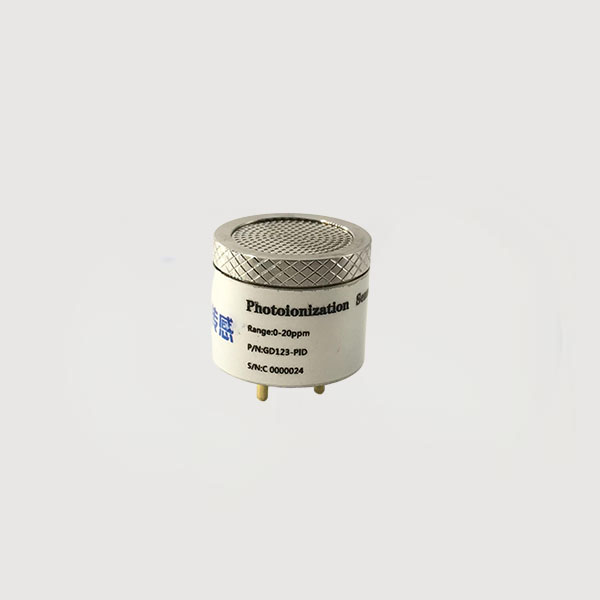

 News
News Industry News
Industry News PID photoionization gas sensor is a highly sensitive and widely used sensor that can detect extremely low concentrations of VOCs gas. Compared with traditional detection methods, it has the characteristics of small size, high accuracy, high resolution, fast response, continuous testing, real-time and high safety.

How do PID sensors sense VOCs?
The photoionization PID sensor uses an ultraviolet (UV) light source to ionize organic molecules into detectable positive and negative ions (ionization). The detector captures the positive and negative charges of the ionized gas and converts them into electrical signals to measure the gas concentration.
After the gas ions are detected on the electrodes of the detector, they will quickly combine with electrons to reconstitute the original gas and steam molecules. PID is a non-destructive detector that does not change the gas molecules to be tested and can achieve continuous real-time detection.
PID can detect compounds at concentration levels of one billionth (ppb) to one millionth (ppm). It is a supplement to non-dispersive infrared, electrochemical, and catalytic combustion gas sensors, and is also a gas detector with relatively high technical content.
Types of gases that can be detected by PID sensors
PID detectors can detect hundreds of compounds, but the ionization energy of different compounds is different. The ultraviolet lamp of the PID detector needs to be selected according to the ionization energy of the target. The current commercial PID detector specifications are divided into 9.8eV, 10.6eV, and 11.7eV.
Organic matter: carbon-containing compounds
Aromatics: compounds containing benzene rings, such as benzene, toluene, naphthalene, etc. Ketones and aldehydes: such as acetone, butanone, acetaldehyde, etc. Amines and amino compounds: chlorine-containing hydrocarbons, such as dimethylamine Sulfur-containing organic matter: mercaptans, carbon disulfide
Unsaturated hydrocarbons: butadiene, isobutylene
Saturated hydrocarbons: butane, octane
Alcohols: ethanol
Inorganic gases: inorganic gases that do not contain carbon, such as ammonia, arsenic, selenium, bromine and iodine, etc.
Advantages of PID sensors
High accuracy
High-precision photoionization sensors can detect organic gases at the ppb level, with an accuracy exceeding that of most commonly used sensors such as infrared sensors.
Non-destructive to the detected gas
The photoionization sensor ionizes the gas after inhaling it, and the ions formed by the gas molecules re-form the original gas molecules after discharge, which is non-destructive to the original gas molecules.
Fast response speed
Except for the period of warm-up after the gas detection system is turned on, under normal working conditions, the photoionization gas sensor can respond almost in real time and can be tested continuously. This is of great significance for protecting the health of detection personnel when detecting dangerous gases.
More solutions of the PID sensors, pls contact us~
ShanXi TengXing Sensor Technology Co.,Ltd
Web: www.tensensor.com
Email: [email protected]
Tel/WhatsApp: 86 18335818384